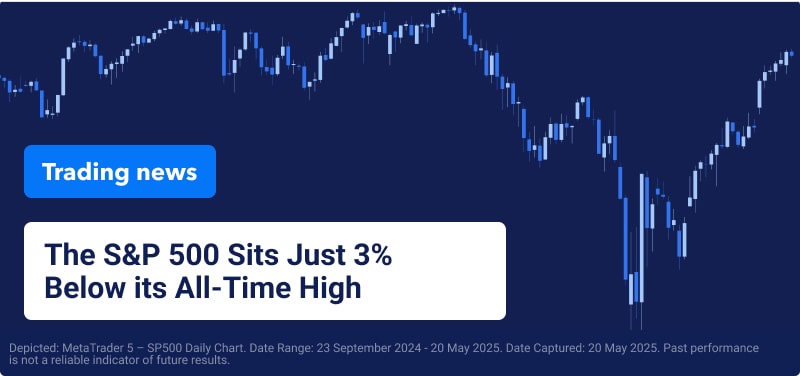Wall Street Shrugs Off Moody’s Downgrade

One of the biggest pieces of news last week was the decision by Moody’s to downgrade the credit rating of the US. Keep reading to find out more about the market reaction and other news.
Moody’s Downgrades US
On Friday, Moody's stripped the US of its triple-A credit rating, citing growing government debt and a widening budget deficit. A lower credit rating signifies countries are more likely to default on their sovereign debt and typically leads to higher borrowing costs.
Moody’s was the last of the big three rating agencies to maintain the highest rating possible on US sovereign debt. Its decision followed previous moves by Standard and Poor’s and Fitch, who both downgraded the US in 2011 and 2023 respectively.
Despite starting the session lower, US stocks appeared to shrug off the news on Monday, erasing their intraday losses and closing the session relatively flat. The Nasdaq, S&P 500 and Dow Jones all ended the day with gains of 0.02%, 0.09% and 0.32%.
Monday marked a sixth consecutive session of gains for the S&P 500 which, despite the volatility of the last few weeks, currently sits just 3% off its all-time high.
Following Moody’s decision, 30-Year Treasury yields spiked to their highest level since October 2023 during Monday’s session. However, throughout the day they retreated significantly from these levels. Bond yields move inversely to price, so rising yields indicate selling pressure.
Consumer Sentiment Slides Lower
The University of Michigan Index of Consumer Sentiment edged down in May, as the index fell to its lowest level in three years.
The preliminary reading, released on Friday, showed that US consumer sentiment had declined for the fifth consecutive month, with the index falling to 50.8, its lowest reading since July 2022.
The survey revealed that US consumers are concerned that US trade policy will lead to higher inflation, with three quarters of respondents specifically mentioning tariffs. However, it’s worth noting that the survey was conducted before the US and China announced a 90-day pause on a range of tariffs between each other.
This latest data regarding consumer sentiment followed news earlier last week that US annual inflation had unexpectedly cooled to 2.3% in April.
UK GDP Grows More than Expected
On Thursday, the Office of National Statistics (ONS) announced that the UK economy is estimated to have grown by 0.7% in the first quarter.
Not only was this figure significantly higher than the 0.1% recorded the previous quarter, but it was also higher than had been anticipated by economists.
First quarter growth was powered by the services sector and an increase in investment. Net trade also had a positive impact, with export volumes increasing 3.5%, suggesting that activity may have been brought forward in an attempt to avoid tariffs.
This week, on Wednesday, the ONS will release UK inflation data for April, in which headline inflation is expected to have accelerated.
More By This Author:
Markets Cheer US-China Agreement To Cut TariffsAmazon And Apple Beat Expectations But Tariff Headwinds Loom
US Stocks Rise as Markets Digest Earnings, Tariffs And Trade Deal
Disclaimer: This material does not contain and should not be construed as containing investment advice, investment recommendations, an offer of or solicitation for any transactions in financial ...
more


